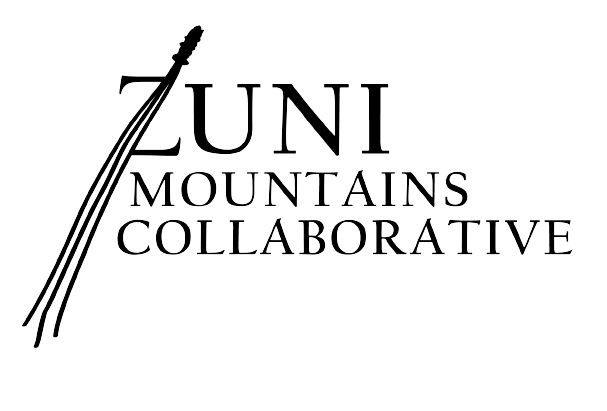Bolstering Landscape Stewardship by Partnering for restoration
What do the words Collaborative Forest Restoration mean to you?
For the Forest Stewards Guild, Cottonwood Gulch Expeditions, US Fish and Wildlife Service, and other partners, these words evoke the type of work which is necessary to collectively increase the pace and scale of forest resiliency treatments in our fire-prone and changing landscapes. By bringing together diverse partners, from land management agencies and NGOs as well as private citizens, we are able to plan for, prepare, and implement stewardship treatments which would otherwise be unachievable.
A necessary component of collaborative forest restoration, and a key element to increasing pace and scale, is education and building local capacity. For over 15 years, the Guild, Cibola National Forest, Cottonwood Gulch, and others have worked to build this collaborative capacity in order to conserve the forests of the Zuni Mountains. On March 4th and 5th, landscape partners came together at Cottonwood Gulch Basecamp to host an S-130 Basic Wildland Firefighter field training day as well as a broadcast burn preparation day.
Building the Workforce
The training day, a component of the National Wildfire Coordinating Group’s (NWCG) suite of required classes for basic wildland firefighter certification, was open to members of the public and represented a free opportunity for individuals interested in fire to receive eight hours of on-the-ground training. Skills taught included fire shelter deployment, use of hand tools, creation of fire containment line, hose lay and extinguishment techniques, how to prepare for being on a fire, and knowledge of safety and firing devices.
Outside of federal agencies, it can be a challenge to develop these necessary skills through a certified training program. The Collaborative aims to make trainings more accessible to non-federal individuals and organizations and to ultimately build local capacity for people to get involved in prescribed and wildland fire. Between the March 4th field day and a March 9th field day hosted at Glorieta Adventure Camps, the Guild provided training for more than 20 individuals.
Preparing for Fire
March 5th saw Guild and Cottonwood Gulch staff, along with volunteers and Partners for US Fish and Wildlife Service, preparing for an upcoming prescribed burn on the outdoor expedition nonprofit’s land. They cut, gathered, and moved branches and logs, called “heavy fuels” for the fact that they burn a long time, away from the fire containment line in order to keep fire behavior mild and to ensure that the prescribed fire will stay within the area intended for burning.
In the past, Cottonwood Gulch has partnered with the grassroots program Chizh for Cheii to thin the forest and provide fuelwood for Diné community elders. Building on this success, they aim to foster forest resiliency into the future by enhancing these thinning treatments with prescribed fire.
You can read more about the upcoming burn at Cottonwood Gulch here or by visiting the facnm.org All Hands All Lands landing page. To get involved as a burn observer, visit the events page. Contact Sam Berry at sam@forestguild.org to learn more about collaborative prescribed fire or fire trainings hosted by the Guild.
This work would not be possible without the support of New Mexico EMNRD - Forestry Division and the Natural Resource Conservation Service, who invested in thinning the forests on Cottonwood Gulch land prior to burning.
Special thanks to Partners for Fish and Wildlife, McKinley County, and Bluewater Acres Fire Department for supporting these efforts with your time and funding.
Many others are pitching in to make these trainings possible and the implementation of prescribed fire a success. It takes a village to care for the land, and we are grateful for the robust community that has come together over the past decade and a half to do precisely that.






